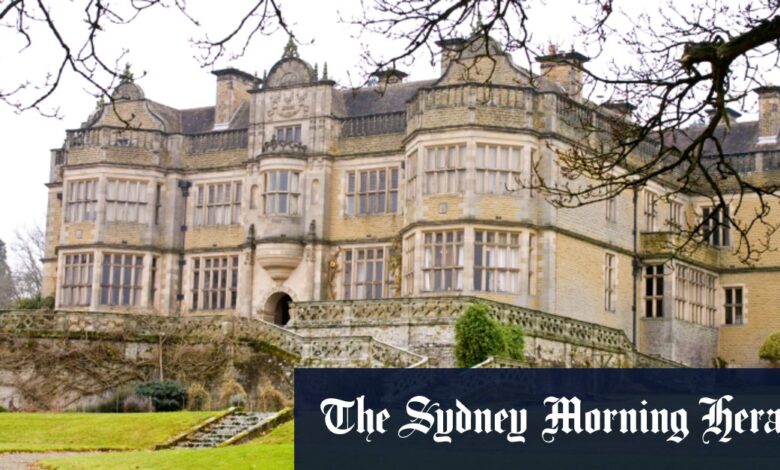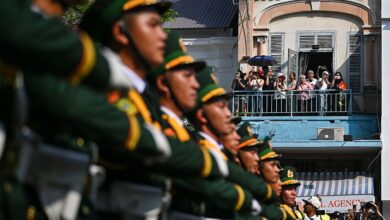Caroline Magnus ‘in shock’ after inheriting mansion Stokesay Court, the country estate where Atonement was filmed

She was not alone in her task. Seven years earlier, she had married the historian Sir Philip Magnus, 2nd Baronet, son of a publisher. (In 1951, he changed his name to Magnus-Allcroft, out of deference to Jewell.) The pair of them remained in the Ladies’ Wing, and there they stayed for the rest of their lives.

English Heritage had acquired Stokesay Castle upon Jewell’s death. Credit:
Sir Philip was Caroline Magnus’ father’s older brother – only older by three years but, she says, “he seemed to belong to a different generation”.
In 1974, a friend of Sir Philip, the writer James Lees-Milne, described him as “so square that he makes me feel positively circular”. Busy writing his books and lunching at his London clubs, Sir Philip wasn’t interested in Stokesay.
“In those days, Victorian houses were thought to be a terrible monstrosity,” Magnus says. “He didn’t think it had any architectural merit whatsoever.”
She first visited her aunt and uncle at Stokesay in the late 1960s and remembers finding them “absolutely terrifying”.
Their world at Stokesay was confined to a few rooms; there was no functional kitchen and “all they had were two old thunder boxes – his and hers. I was a very shy child and had had rather a sheltered upbringing. When I went to bed, they turned all the lights out so I was in the pitch black, and hadn’t thought to bring a torch with me. It was pretty scary, that first weekend.”
Though Magnus continued to visit Stokesay sporadically, she was still fairly unfamiliar with it when Jewell died in 1992. But she had at least got a sense of how poorly Stokesay had been looked after.
The house was “a time warp. They lived their lives out in the Ladies’ Wing, and everything else was mothballed – the house started to deteriorate, the roof failed”.

Stokesay Court was a “time warp” when it was bequeathed. Credit: Alamy Stock Photo
Even after the brown envelope had turned up, Magnus could have walked away. Indeed, English Heritage had acquired Stokesay Castle upon Jewell’s death and were interested in the court, too. This, Magnus remembers, “seemed like a good fix – they were very excited as, apart from the roof, the house was in good structural order”.

Keira Knightley in Atonement. Credit: Archive
But then the funds required failed to materialise and Stokesay’s contents were sold by Sotheby’s in October 1994. The 2000 lots raised £4.5 million and, once an uninterested beneficiary had been paid off, Magnus committed to Stokesay.
“People said to me, ‘Oh, the house should go, too’,” she remembers, “but I said, ‘No, I’m going to try it’. I don’t like being told I can’t do something.”
She spent the next decade future-proofing the house before, in the early 2000s, there came a bolt out of the blue.
A film producer, looking for a country house to feature in an adaptation of Ian McEwan’s novel Atonement, got in touch, having spotted Stokesay in Country Life magazine, and asked if Magnus would be interested. You can guess what her answer was.
“I was lucky to get Atonement – filming doesn’t always work [for the house], but it really did [that time],” she says. “It was one of the happiest periods here.”
When she talks about Atonement, which was released in 2007 starring James McAvoy and Keira Knightley, Magnus describes it as “giving the house a new history”. She would love to host another film.

Keira Knightley and James McAvoy during a scene from Atonement, which was filmed at Stokesay Court.Credit: FOCUS FEATURES LLC.
Atonement was filmed at the house over about four months in the summer of 2006 in return for a six-figure rent and several redecorated rooms.
Magnus had a “mega-boost of energy” and opened the house for tours and events. More recently, she says she has “stopped trying to do so much in order to enjoy it more as a home, and also balance the books. You can’t do it all”.
Loading
Reflecting on her stewardship of Stokesay, she says the best time for country houses was under the Blair government.
“If you had the energy, and you were prepared to do something commercial with your house, you had the support of the government to do so. I’m not convinced that the last few years have been [so] good.”
Of course, not all big houses are created equal.
“The Chatsworths and the Blenheims are fantastic treasure houses, but when you’ve got something that isn’t quite so frontline, you have to find a way of keeping them going. That’s when it becomes more challenging, with those houses that – if you were to open them all the time – you would lose money.”

Saoirse Ronan and James McAvoy in Atonement.Credit:
Following October’s British budget, she wonders whether the Victoria and Albert Museum’s 1974 exhibition The Destruction of the Country House would have such an impact today. “There seems to be less interest in history and heritage than there was. I hope it will revive again.”
Next, Stokesay will pass to Magnus’ nephew.
“Letting go is not going to be easy,” she says, “but too many people hold on too long.”
She was told she couldn’t make Stokesay work, and that she was mad to take it on. But she was also brave. “I don’t know about that,” she says. “There’s a fine line between bravery and madness.”
The Telegraph, London
Get a note directly from our foreign correspondents on what’s making headlines around the world. Sign up for our weekly What in the World newsletter.
https://static.ffx.io/images/$zoom_0.1724%2C$multiply_0.7554%2C$ratio_1.777778%2C$width_1059%2C$x_0%2C$y_95/t_crop_custom/q_86%2Cf_auto/t_smh_no_label_no_age_social_wm/bf74f0e54884d87eae73731ff5b4632714084b42
2024-12-09 02:30:00




